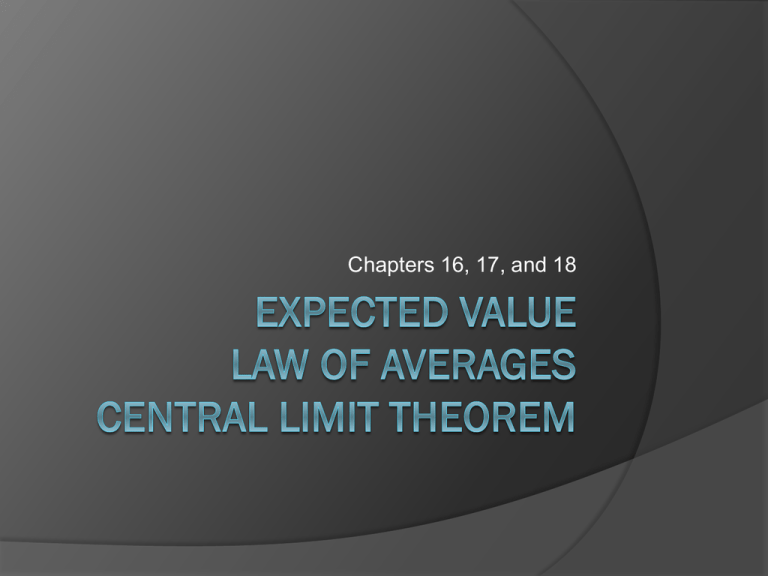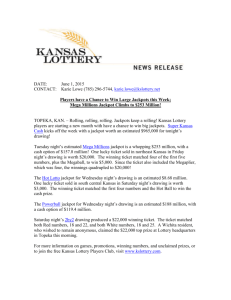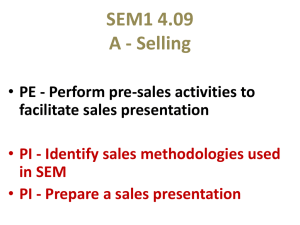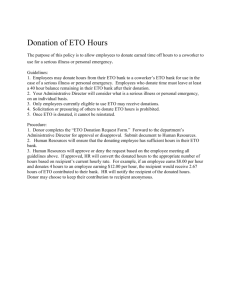Alternate version
advertisement

Chapters 16, 17, and 18 Flipping a coin n times, or rolling the same die n times, or spinning a roulette wheel n times, or drawing a card from a standard deck n times with replacement, … Interested in the accumulation of a certain quantity? We can box model the process. Actual outcomes are therefore abstractly represented by tickets. to Make a Box Model First draw a rectangular box. Then write next to the box how many times you are drawing from it: n = … What tickets go inside the box? That depends on what value you could add on to a requested quantity each time you draw from the box! Then, write the probability of drawing a particular ticket next to that ticket. Examples: Chapter 16, #5-8 The expected value of n draws from the box is therefore given by: EVn = n*EV1 The expected value of 1 draw from the box, also called the box average, is given by: EV1 = weighted average of tickets in box = first ticket *probability of drawing first ticket + second ticket *probability of drawing second ticket + … “The more you play a box-model-appropriate game, the more likely you get what you see of the box.” “What is expected to happen will happen.” Examples: Chapter 16, #1, #4 A consequence of the Law of Averages is that we should not hope to come away with a gain by playing many times – we will eventually come out as a loser if we play long enough. The expected value of n draws is given by EVn = n*EV1, where EV1 is the average of the box. Now of course our actual accumulated total could differ somewhat from the expectation, and we call our typical deviation standard error, given by: SEn = √n *SE1, where SE1 is the standard error of the box. n Standard error of a box, or standard error of a single play, or standard error of a single draw, all mean the same thing. For a box with only two kinds of tickets, valued at A and B respectively, and with probability of p and q of being drawn respectively, the standard error of the box is given by: SE1=|A-B|* √(p*q) Examples: Chapter 17 #10 1. 2. This is related to the normal table we played with. Now the EVn acts as the “Average” And SEn acts as the “Standard Deviation” Chapter 17, Question 3c Continuity Correction is needed when you are dealing with discrete outcomes. Suggestion: Draw the normal curve and label the average. Then judge where you want to be and in what direction you should shade; then standardize and look up percentages. And so the new version of Standardization Formula: z actual EV n SE n When do we know we may use continuity correction? That’s when the observed outcomes are discrete. For example, if you are counting the number of democrats among a sample of 400 people, you can probably get 0, 1, 2, …, 399 ,or 400, but nothing else between any two numbers (such as 349.97) Examples: All questions in Chapter 18 where the box model is a “COUNTING BOX” (box with only 0 and 1) A non-example: Height of people in the US Example: P(at least break even) = P(actual > -0.5) Example: P(lose more than $10) = P(actual < -10.5) Example: P(win more than $20) = P(actual >20.5) Example: P(no more than 2300 heads) = P(actual < 2300.5) The basis for what we did is called Central Limit Theorem. The Central Limit Theorem (CLT) states that if… We play a game repeatedly The individual plays are independent The probability of winning is the same for each play Then if we play enough, the distribution for the total number of times we win is approximately normal Curve is centered on EVn Spread measure is SEn Also holds if we are counting money won Note: CLT only applies to sums! See Chapter 18 Question 10.










